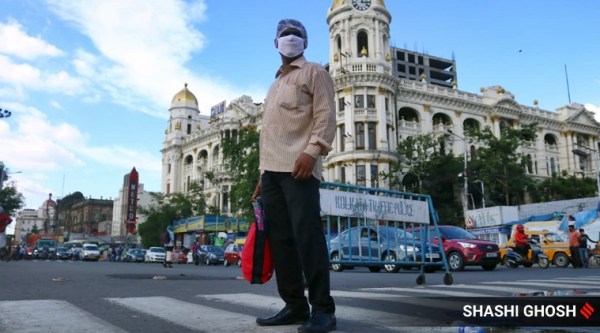 What explains the intrusion of the virus into every nook and corner of the globe is the way the present world is made up of complex associations and assemblies.
What explains the intrusion of the virus into every nook and corner of the globe is the way the present world is made up of complex associations and assemblies.
The coronavirus is an infectious agent with a difference. The culture and structure of its formation seem to invite the life sciences to revisit the very idea of life and living organism. Issues such as the mutation of the virus, the way it intrudes into the human body and its afterlife, the immune system, and other biological crises might compel disciplines like microbiology and biochemistry to reorganise their disciplinary configuration.
An equally urgent intellectual task ahead is to reassemble the humanities and social sciences since the pandemic has made a devastating impact on humanity at large. What calls for the attention of these disciplines is the power of the non-human over the human. Scientists in France conducted inquiries into the role of non-human and non-living actors in human affairs during the 1980s and ’90s. In their study of the life of science and scientists, Bruno Latour, Michel Callon, John Law, Peter Lodge and others stumbled upon a new insight, which has come to be known as the Actor Network Theory (ANT), that nothing is outside the network, and everything is connected in the social.
According to ANT, the social world is not merely a conglomeration of people as loosely understood by classical social scientists, but an assemblage of human, non-human and non-living entities, caught in the network of associations. It is these associations of things that social scientists have to pay attention to, marginalising anthropocentric assumptions. However, in the context of COVID-19, I would like to focus here on the interface between the human and the non-human among several aspects of the ANT.
As practitioners of ANT observe, human society has changed over a period of time, and innumerable objects like pen, camera, telescope, airplane, cellphone, and non-human entities like microbes constitute the social. Our life is woven into the network of these things, and in this network, non-human entities, which have no will, intention and mind like humans, make a difference to our life. Therefore, in the framework of ANT, humans are not the only agents to make a difference to this network, but viruses like corona and objects like airplanes become active agents of change.
Non-human and non-living entities are called actors because they bring about change in the network of the social. Therefore, Latour elsewhere observes that the virus is the real globaliser, not just the MNCs. However, the capacity of non-human actors to make a difference is not intrinsic to them. They are powerful because they are participants in the network. They become influential in their association with the larger network of things including humans. The lesser the power of the network, the minimal will be their impact. The virus has, thus, appeared on scene when the entire network of the world, due to globalisation, has been thick and closely knit. Had COVID-19 appeared during the pre-modern world, when mobility and human connections were limited, the world would have been much better than what it is now.
What explains the intrusion of the virus into every nook and corner of the globe is the way the present world is made up of complex associations and assemblies. The greatest challenge before us is to reconfigure the network of things without holding it back. Therefore, it is quite useful to understand the thick world we inhabit today in order to solve the problem of the epidemic. The ANT’s sociology of associations helps us understand it and grasp the problem of the pandemic better.
Thus, ANT compels us to reassemble not only our social world but also the social sciences and humanities. Since, as ANT shows, the natural, social and technological are not separate domains, and they create the reality around us through networking, we need to reorganise our knowledge systems based on a new interdisciplinary thinking, breaking the borders of narrow knowledge compartments. Such a project calls for integrating the sciences with arts and humanities, and social sciences. For example, assimilating the history of sciences in the study of pure sciences, scientific narratives in the discipline of historical studies, film and literary texts on ecological crises in environmental sciences, social history of epidemics in life sciences, among others, would help us look at the network of actors clearly, and empower us to deal with problems arising out of this network.
The writer is chairman, Department of English Studies, Davangere University, Karnataka